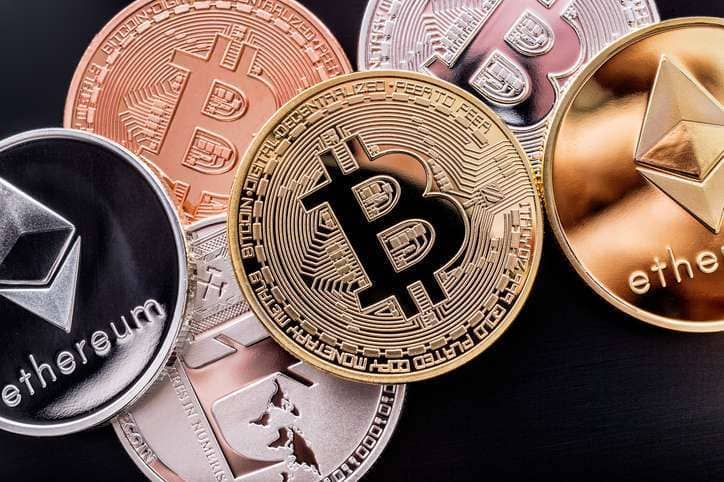Content
Staking, on the other hand, is a very similar method where traders also lock crypto assets but get rewarded in crypto. The only difference is that you don’t need to open a liquidity pool or contribute to one. Liquidity mining profitability would also draw implications towards the difference between providing and mining liquidity.
- A single token pool like the cake pool exists because PS needs to maintain high liquidity of their own coin so they can justify have it as a single coin pool.
- So the value will probably gradually go down, and that’s why savvy investors are trying to earn as much as they can now.
- Yield farming is a popular decentralized financial instrument in DeFi that yields capital by extracting value from providing liquidity to decentralized exchanges.
- This is because many people took DOGE out of the liquidity pool and deposited ETH into it.
- The majority of DeFi protocols run on the Ethereum blockchain, although other options are available.
- In DeFi, you can borrow money without anyone even asking for your name.
The second thing Liquidity Miners get is a share of the exchange fees – in the case of the DeFiChain DEX, this is 0.2%. If you now add 1 BTC and 50,000 DFI to the liquidity pool, you contribute 10% of the liquidity and are entitled to 10% of the Liquidity Mining Rewards. This means that the more time you have, the lower the risk of an impermanent loss. Liquidity mining comes in really handy when attracting press coverage and raising greater awareness of the product. However, the entire campaign needs to be carefully managed to ensure that the liquidity mining budget isn’t spent on just this one goal.
Value Benefits of Liquidity Mining
In decentralized markets, DeFi liquidity pools have arisen as a creative and automated way to address liquidity challenges. They substitute the conventional model of order books used by centralized crypto exchanges, taken straight from the developed stock markets. Liquidity providers get rewards in the form of a percentage of trading fees, additional tokens, or even governance tokens. As far as these risks go, I only provide liquidity whenever there are liquidity mining incentives in place. From my experience, liquidity mining rewards almost always outweigh potential impermanent loss. Also you probably don’t want to become a LP unless you have a decent chunk of money to work with, $50 will almost certainly end up as as loss.
What actually happens is that the group of liquidity miners gets to share the fees collected from traders on the DEX, and the shared haul grows larger as trading volumes increase. Therefore, a smaller fee can work out to a larger payout if that particular tier happens to be incredibly what is liquidity mining active on the Uniswap trading platform. A larger stake of locked-in liquidity gives you a bigger piece of the total pie. You can pick one of several reward tiers tied to different interest rates charged to traders who actually make use of the digital funds you’re providing.
What is DeFi?
The COMP distribution will only last four years and then there won’t be any more. Further, most people agree that the high price now is driven by the low float (that is, how much COMP is actually free to trade on the market – it will never be this low again). So the value will probably gradually go down, and that’s why savvy investors are trying to earn as much as they can now. “Farming opens up new price arbs that can spill over to other protocols whose tokens are in the pool,” said Maya Zehavi, a blockchain consultant.

Liquidity mining would draw attention towards the types of protocols for the same. After one year of launch, the demand for liquidity farming or mining has increased profoundly. More than 120 DeFi platforms have over $80 billion worth of assets locked in them. Even if you can expect all DeFi solutions to follow similar concepts, there is a specific approach to distributing liquidity farming protocols. The three notable types of categories among liquidity farming protocols would include the following.
Balancer
As the DeFi space grows, liquidity farming will be at the center of it all. It incentivizes holders to join liquidity pools and provide liquidity to DeFi projects. As such, both developers and innovators benefit by introducing liquidity mining pools to holders.
Staking, Yield Farming, and Liquidity Mining Explained https://t.co/MRSnUDfqnf via @YouTube
— Coinsul (@coinsul) July 15, 2022
If you’ve ever taken an interest in ICOs, then you’re surely aware of their many drawbacks. While it does have its flaws, it is the most popular way to fund projects. With the popularity of ICOs emerged a need to make cryptocurrency funding better.
Join 1000+ investors who are successfully trading stocks and get fresh, for your eyes only predictions in your inbox, weekly.
Smaller pools will suffer from slippage because of the pricing algorithm if someone unexpectedly tries to position a significant transaction. There have been cases, such as the bZx hack in 2020, where users manipulated smaller liquidity pools as part of a larger market manipulation assault. The simplest variant of a DeFi liquidity pool holds two tokens in a smart contract to form a trading pair. The concept is to operate a decentralized financial system that uses smart contracts to deliver financial services such as borrowing and lending. DeFi allows a digital money market that is unbiased and accessible to everyone.
Therefore, it is possible to avoid IL if the market returns to the original price. If that does not happen, LPs are forced to withdraw liquidity and realize their IL. Impermanent loss is defined as the opportunity cost of holding onto an asset for speculative purposes versus providing it as liquidity to earn fees. Liquidity mining means that always two trading pairs are fed into the system by independent liquidity miners, for example BTC-DFI. This article will focus on how liquidity mining and swapping on a DEX work and what the risks are.

They either receive coins that are minted or % of fee paid by transactor. That seems to make sense to me, but I would assume your rewards would be quite.low. Thank you very much, objective information is such an asset in this space. You only want to liquidity mine with 2 coins that you would want to hold anyway. That way even if you lose USD value in the short term you end up with more of the coins that you are willing to HODL until profit. In that case you would end up with all DOGE and no ETH, because everyone would be selling DOGE for ETH.
Definition
Decentralized exchanges are required to be liquid by nature, thereby implying the facility of rewards for users offering liquidity to them. The liquidity pool would provide rewards to the participants in the form of governance tokens or native tokens of the protocols. One of the most popular applications of blockchain technology is decentralized finance , and a popular way for crypto investors to participate in DeFi is to mine for liquidity. In this guide, we will introduce the concept of DeFi liquidity mining, why it matters, which platforms enable users to mine for liquidity, its benefits and the risks involved in this investment strategy. Want to avoid impermanent loss and ditch liquidity mining altogether? You can still make profits by simply trading DeFi assets and rebalancing portfolios that hold the governance tokens of your dearest lending or DEX protocols.
Click on the “pool” button and then the “new position” link, select the Uniswap trading pair you want, and see how the rewards work out. Ethereum and Tether are one of the most popular pairings on Uniswap, so we’re going with those options. In crypto liquidity mining, you earn rewards by letting a decentralized trading service work with some of your cryptocurrency tokens.
Benefits of Liquidity Mining
AMMs offer token swapping that makes it possible to trade one token for another within one particular liquidity pool. When a user decides to conduct a trade, they are supposed to pay a certain fee. The AMM, then, collects the fees and provides them to each liquidity provider as a reward.
These fees add up over time based on how long the LP provides liquidity. Simply put, yield farming is depositing your coins to earn interest on them. This works just like earning interest from holding money in a bank account, except with higher APY.
UncleMine Proof-of-Liquidity explained.@UncleMineNews#UncleMine #UM #farming #Mining #Staking #Solana #usdc #Filecoin #AVAX #NFT #liquidity pic.twitter.com/vq7PDzR4n0
— Capitano Dera (@MentorLisax) July 13, 2022
Annual Percentage Rate and Annual Percentage Yield are the two popular metrics that ascertain the rate of return based on the assets reinvested in the liquidity pool. However, since DeFi is a competitive market that offers volatile returns, the rewards may diminish as more investors enter the liquidity pool. Apart https://xcritical.com/ from GPU and ASIC mining, we’re seeing the emergence of other methods such as HDD mining and staking, yield farming, and liquidity mining. The DeFi space is full of methods that reward traders for holding tokens and currencies. Before DeFi, these methods were unheard of.Liquidity mining exists because of DeFi .
The capabilities and benefits of liquidity mining
Is an essential aspect of the DeFi ecosystem and a vital one for ensuring the growth of DeFi. Liquidity providers can earn passive income through the liquidity pools on decentralized exchanges with liquidity farming. Just deposit cryptocurrencies in liquidity pools containing trading pairs and earn LP tokens.
Transactions made on these exchanges can be completely anonymous and will never involve a profit-seeking intermediary such as a bank or a financial services company. DEXes are seen as a crucial ingredient in truly decentralized finance systems. The blockchain space is still growing and whether liquidity mining will prove to be a worthwhile long-term crypto investment strategy remains to be seen.
Every day, the Compound protocol looks at everyone who had lent money to the application and who had borrowed from it and gives them COMP proportional to their share of the day’s total business. But Compound announced in 2020 it wanted to truly decentralize the product and it wanted to give a good amount of ownership to the people who made it popular by using it. Immature and experimental though it may be, the technology’s implications are staggering. On the normal web, you can’t buy a blender without giving the site owner enough data to learn your whole life history.